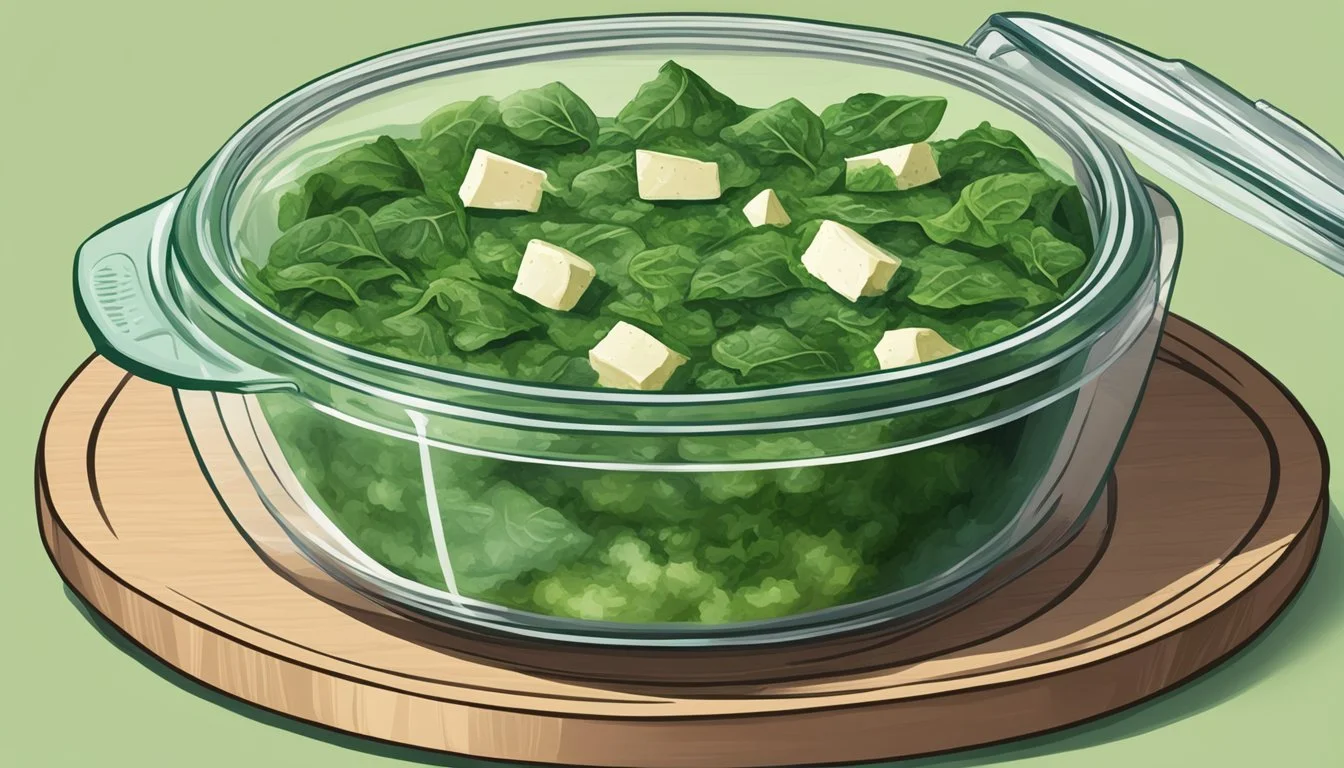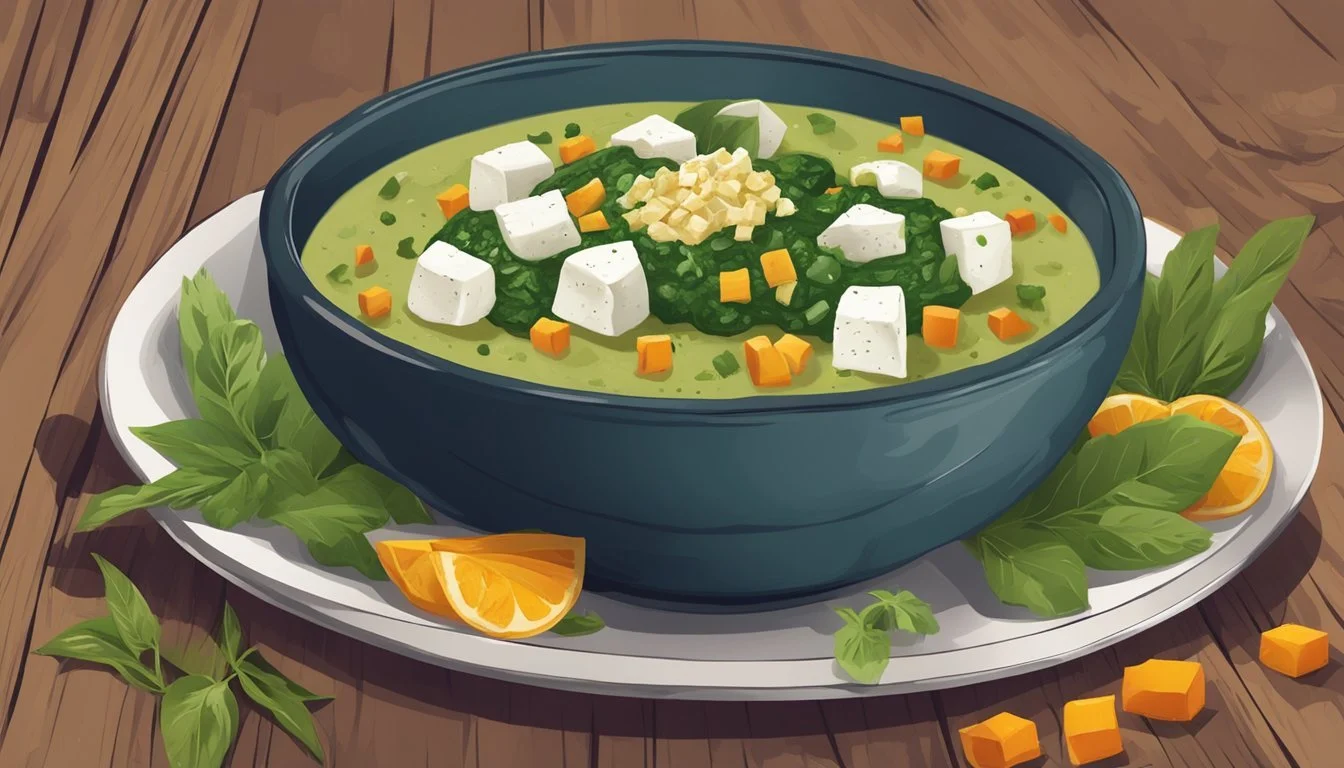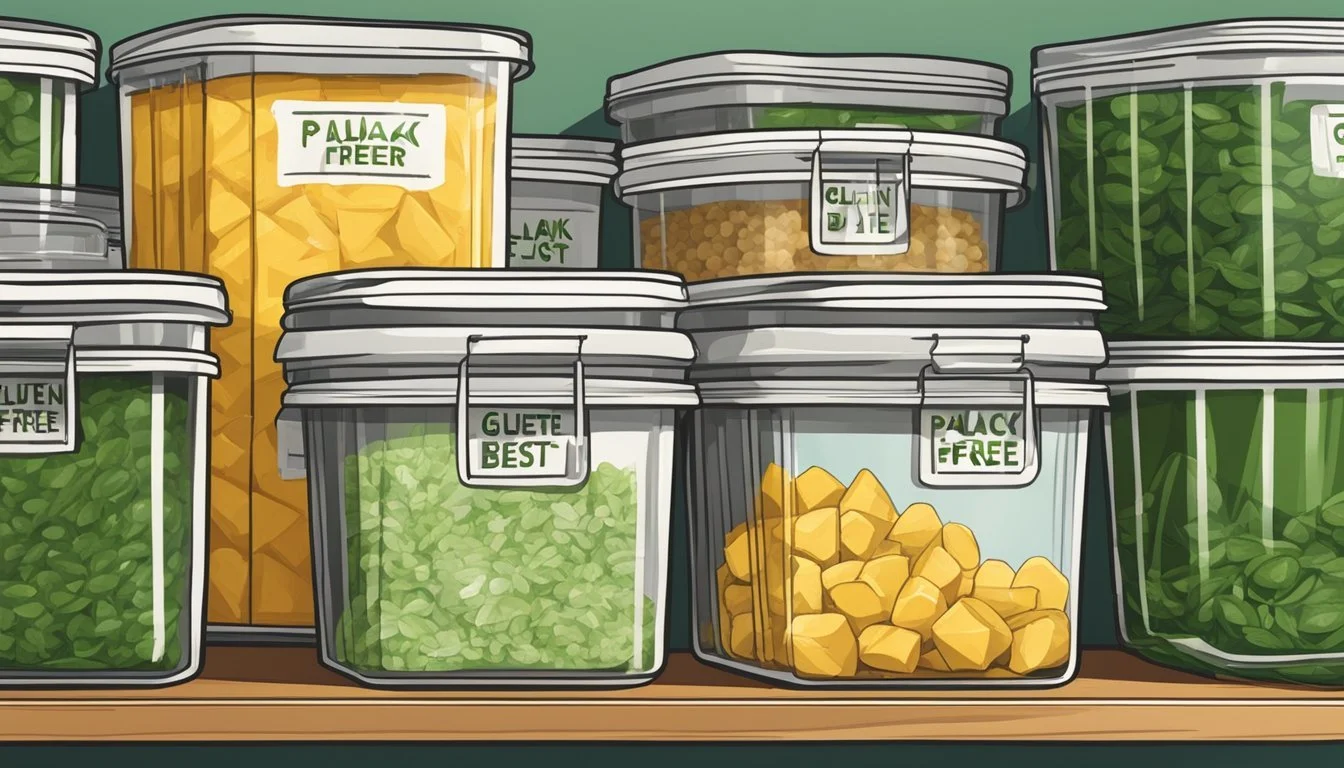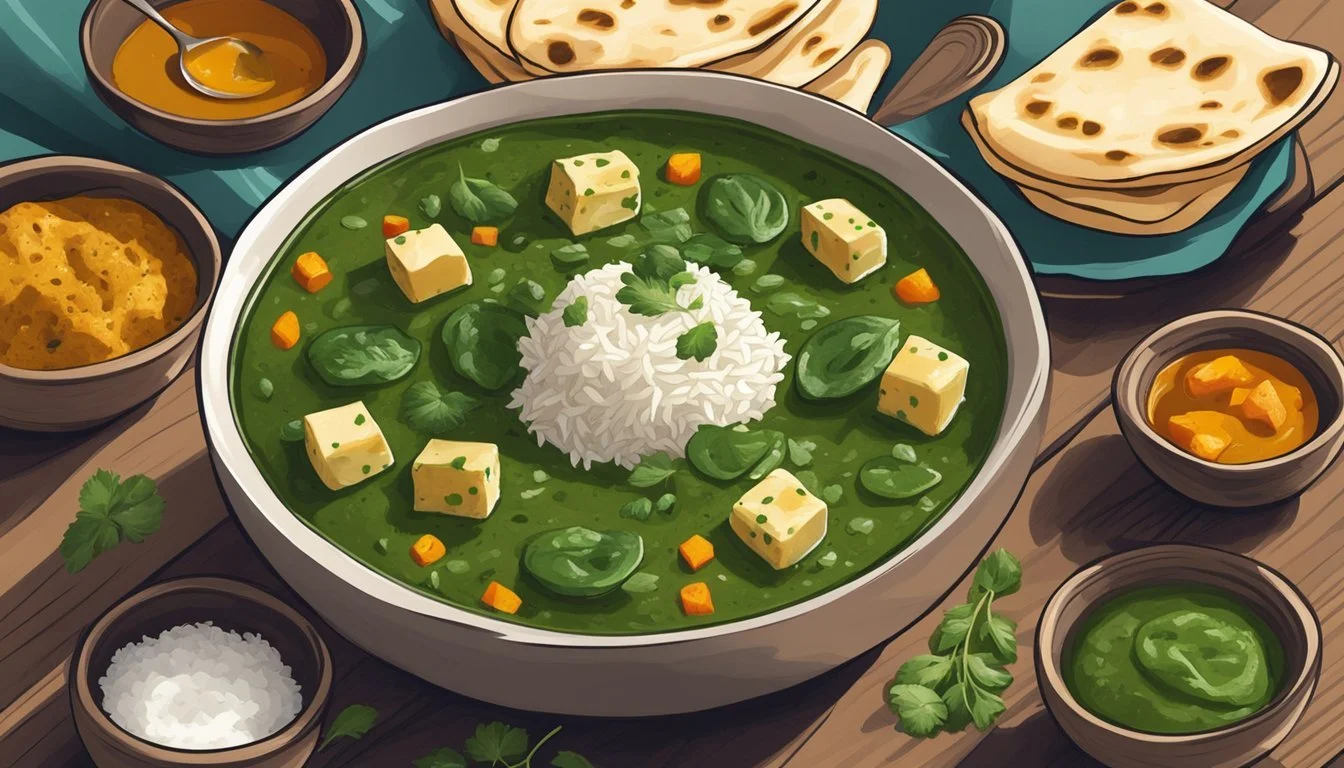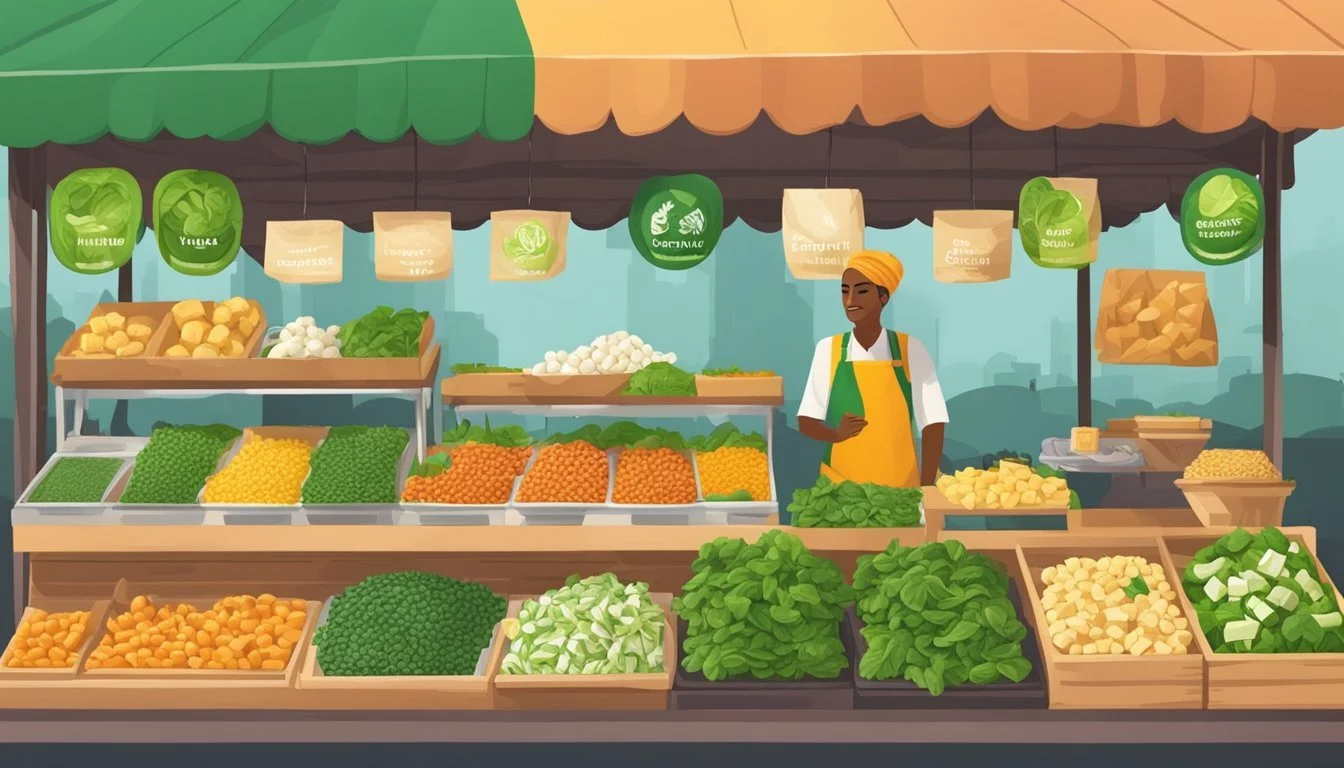How Long Does Gluten-Free Palak Paneer Last?
Storage Tips and Shelf Life
Gluten-free Palak Paneer, a cherished staple in Indian cuisine, offers the perfect blend of tender spinach and paneer, also known as Indian cottage cheese. The creamy, savory taste is a delight for vegetarians and gluten-sensitive individuals alike. Stored correctly, gluten-free Palak Paneer can last for about three to four days in the refrigerator, making it an excellent option for meal prepping.
Spinach, a primary ingredient, retains its vibrant color and nutrition when stored in an airtight container post-cooking. The paneer, which soaks in the rich spices, continues to enhance the dish's flavor over time. Reheating is simple and doesn't compromise the dish's texture or taste, making it easy to enjoy this flavorful meal throughout the week.
The robust nature of the ingredients ensures that the dish remains delightful for a few days. For those who love a good home-cooked meal but have a busy schedule, Palak Paneer offers both convenience and taste, providing a nourishing option that fits easily into their culinary routine.
Understanding Palak Paneer
Palak Paneer, a vegetarian delight, combines fresh spinach with paneer, a type of Indian cheese. This dish is popular for its unique blend of flavors and nutritional value.
The preparation involves sautéing onion, garlic, and ginger. These ingredients create a flavorful base. Tomato is often added to enhance the richness of the sauce.
Next, the spinach is blanched and pureed. This puree is then simmered with a mixture of spices such as garam masala, cumin, turmeric, and coriander powder. These spices bring warmth and depth to the dish.
Paneer cubes are then added to the spinach mixture. The cheese absorbs the flavors while maintaining its soft, chewy texture.
To finish, a touch of cream can be added. This gives the dish a luxurious, smooth texture and balances the spices.
Nutrition is a key aspect of Palak Paneer. Spinach provides a high amount of vitamins A and C, while paneer is a good source of protein and calcium. The spices not only add flavor but also bring their own health benefits.
This balance of ingredients and flavors make Palak Paneer a nourishing and satisfying dish loved by many.
Ingredients Breakdown
Palak Paneer is a delicious and nutritious dish made from a combination of fresh vegetables, aromatic spices, and dairy.
Spinach: Fresh, washed spinach leaves form the base of the dish. Blanch the spinach before blending it into a smooth puree.
Paneer: Paneer, a type of fresh cheese, is cut into cubes and added to the spinach mixture. It adds protein and a creamy texture.
Onion: Finely chopped onions are sautéed until brown. They provide a slightly sweet base flavor.
Garlic and Ginger: Minced garlic and ginger add aromatic qualities and a subtle heat to the curry.
Tomatoes: Pureed tomatoes contribute acidity and richness. They help balance the dish's flavors.
Garam Masala: This spice blend, including cinnamon, cloves, and cardamom, adds depth and complexity.
Salt: Important for seasoning, it brings out all the flavors.
Turmeric Powder: Provides a warm, earthy flavor and bright yellow color.
Cumin Seeds: These seeds are sautéed in oil for a fragrant base.
Coriander Powder: Adds a citrusy note and depth to the curry.
Cream: Optional, but adds a rich, velvety finish to the dish.
Oil: Used for frying spices and vegetables, imparts a rich taste.
Water: Added to achieve the desired consistency of the curry.
The combination of these ingredients results in a dish that is rich in flavor and full of nutrients, suitable for gluten-free diets.
How to Make Gluten-Free Palak Paneer
Making gluten-free palak paneer involves several key steps, including preparing fresh spinach, making paneer, and combining the ingredients into a smooth curry. The recipe requires careful attention to the preparation and cooking times to ensure the dish retains its flavors and textures.
Preparation of Spinach
Start by washing 500 grams of fresh spinach leaves thoroughly. Bring 2-3 cups of water to a boil in a large pot. Add the spinach leaves and blanch them for about 2 minutes, until they are wilted and dark green. Immediately transfer the blanched spinach to a bowl of ice-cold water to retain its color and freshness.
Drain the spinach completely and blend it in a blender until it forms a smooth puree. This puree will be the base of the curry, giving it its characteristic vibrant green color and rich nutritional value. Make sure to set it aside for later use.
Making Paneer
Paneer, a type of cottage cheese, is essential for palak paneer. Begin by heating 2 liters of whole milk in a large pot. Stir occasionally to prevent scorching. Once it comes to a boil, add 3 tablespoons of lemon juice or vinegar gradually while stirring continuously. The milk will curdle, separating into curds and whey.
Turn off the heat and let it sit for a few minutes. Strain the mixture through a muslin cloth to separate the paneer from the whey. Rinse the paneer under cold water to remove any acidic taste. Squeeze out excess water and press the paneer into a flat block using a heavy object. Cut the paneer into cubes.
Preparing the Base Curry
Heat 2 tablespoons of neutral oil in a large pan over medium heat. Add 1 finely chopped onion and sauté until golden brown. Add 2 minced garlic cloves, 1 teaspoon of grated ginger, 1 chopped green chili, and cook for an additional minute.
Next, incorporate dry spices: 1 teaspoon cumin seeds, 1/2 teaspoon turmeric powder, 1 teaspoon ground coriander, and 1/2 teaspoon red chili powder. Stir the mixture to combine and cook until the spices are fragrant. This forms the aromatic base of the curry.
Combining Ingredients
Add the spinach puree to the pan with the sautéed onions and spices. Stir to combine everything thoroughly. Also, pour in 1/2 cup of coconut milk to add creaminess to the curry while keeping it dairy-free in the base, as the paneer is made from dairy.
Simmer the mixture over low heat for about 10-15 minutes, allowing the flavors to meld together. Adjust salt to taste. Add the paneer cubes and gently stir to coat them with the spinach curry. Cook for an additional 5 minutes until the paneer is heated through.
Final Touches
Once the paneer is fully heated, turn off the heat and let the curry rest for a few minutes. Garnish with freshly chopped cilantro and a squeeze of lemon juice for added brightness and flavor. Serving the gluten-free palak paneer with steamed basmati rice or warm naan reinforces its satisfying, hearty appeal.
This dish can be refrigerated for up to three days and reheated gently before serving. Proper storage and reheating are essential to maintain the dish's texture and flavor.
Preservation and Shelf Life
Gluten-free palak paneer can be enjoyably preserved, maximizing its freshness and flavor when kept under proper conditions. Effective refrigeration and freezing practices are essential to maintain the quality of this delightful curry.
Refrigeration Best Practices
Refrigerating palak paneer involves specific steps to ensure it lasts and remains safe to eat. After cooking, cool the curry promptly before transferring it to an airtight container. Refrigerated leftovers can generally last up to 3-4 days. Always consume earlier portions quickly to avoid spoilage.
Ensure the temperature of the fridge is between 32°F to 39°F (0°C to 4°C) for optimal storage. For further preservation, submerge the paneer in water within a lidded bowl to keep it moist and maintain texture. Made with fresh spinach and tomatoes, gluten-free palak paneer remains fresher with these proper storage methods.
Freezing and Thawing
For extended shelf life, freezing is an excellent option for palak paneer. Cool the dish completely before transferring it to a freezer-safe container or resealable plastic bag. Remove excess air to prevent freezer burn. Frozen palak paneer retains good quality for about 2-3 months.
When ready to eat, thaw the palak paneer in the refrigerator overnight. For quicker thawing, use the microwave's defrost setting. Reheat the curry on the stove until it reaches an internal temperature of 165°F (74°C) to ensure it's safe to eat. Proper freezing and thawing techniques help maintain the palak paneer’s texture and flavor.
Nutritional Information
The nutritional profile of gluten-free palak paneer varies based on ingredients and preparation methods.
Calories: A serving of gluten-free palak paneer typically contains around 250-300 calories. The actual count can vary based on the use of ingredients such as coconut milk.
Carbohydrates: Carbohydrates are mainly derived from spinach and spices, contributing approximately 10-15 grams per serving.
Protein: A primary protein source in palak paneer is paneer, with each serving providing around 12-15 grams of protein.
Fat: The fat content varies, typically around 15-20 grams per serving.
Saturated Fat: Saturated fat mainly comes from paneer and any added cooking fats, ranging from 7-10 grams per serving.
Sodium: Depending on added salt and other ingredients, sodium levels can vary. It’s advisable to moderate salt to keep sodium around 300-400 mg per serving.
Fiber: Spinach contributes to the fiber content, usually offering around 3-4 grams per serving.
Sugar: Natural sugars from spinach and other vegetables are minimal, typically less than 5 grams per serving.
Iron: Iron-rich spinach ensures that each serving provides about 20-25% of the daily recommended intake.
Potassium: Spinach and paneer contribute to potassium levels, offering around 500-600 mg per serving.
Calcium: Paneer is a good source of calcium, with each serving providing around 20-25% of the daily recommended intake.
Vitamin A: Spinach is rich in Vitamin A, offering more than 50% of the daily recommended intake per serving.
Vitamin C: Each serving of palak paneer provides approximately 30-40% of the daily recommended intake for Vitamin C.
Accompaniments and Serving Suggestions
When serving gluten-free palak paneer, a variety of accompaniments can complement the dish well. Rice is a popular choice, particularly basmati rice. Its fragrant, long grains pair nicely with the creamy spinach and paneer.
For those who prefer bread, naan, roti, and paratha are excellent options. These can be easily made gluten-free using alternative flours like chickpea or rice flour.
In a restaurant setting, palak paneer is often accompanied by these staples, allowing diners to experience a balanced meal.
At home, experimenting with different sides can enhance the dining experience. Pairing it with a simple cucumber and tomato salad can add freshness and contrast.
Additionally, a side of homemade mint chutney offers a tangy flavor that balances the richness of the dish.
For a cohesive meal, serving palak paneer with a light lentil soup or dal can add protein and variety to the course.
Incorporating these elements ensures a satisfying and well-rounded meal that highlights the flavors of gluten-free palak paneer.
Customization and Variations
Exploring different ways to prepare and customize Palak Paneer allows you to cater to various taste preferences and dietary needs. This flexibility makes it easier to tailor the dish with personal touches in spiciness, ingredients, and cooking methods.
Adjusting Spiciness
Adjusting the level of spiciness in Palak Paneer can be simple. The use of green chili and red chili powder can be increased or decreased according to one's taste.
For a mild flavor, reduce the spices or opt for a more creamy texture by incorporating heavy cream. Conversely, heightening flavors with more garam masala and additional chili can intensify the dish's heat. Using mustard greens instead of or alongside spinach can add a subtle sharpness to the spice profile.
Vegan Alternatives
For those on a vegan diet, replacing paneer with firm tofu serves as a great alternative while retaining a similar texture.
Cooking the tofu with a touch of curry powder and coconut aminos in a cast iron skillet can impart rich flavor. Instead of ghee or butter, use oil like avocado or coconut oil. Incorporating nutritional yeast can also enhance the richness, mimicking the mouthfeel of traditional dairy-based ingredients.
Alternative Cooking Methods
Different cooking methods can refine the Palak Paneer to suit availability and convenience.
Using an Instant Pot or stovetop offers efficient and quick preparation. Blanching the spinach retains its vibrant color, while sautéing ingredients in a nonstick pan might be preferred for evenly cooked paneer. For a roasted finish, baking the paneer before adding it to the spinach mixture can add a unique texture, whereas slow cooking enhances the depth of flavors.
Customizing the recipe allows for personalized touches, making it a versatile and widely loved dish.
Troubleshooting Common Issues
Consistency Issues
If the palak paneer curry turns out too thin, simmer it longer to let the excess water evaporate. Alternatively, blending the leafy greens (spinach) into a finer paste can help thicken the mixture.
Paneer Not Soft
To ensure that the paneer stays soft and tender, add it to the curry just before serving. Overcooking paneer can make it hard and chewy.
Flavor Problems
Unbalanced flavors can ruin the dish. If your palak paneer tastes bland, try adding a bit more salt or spices like cumin and coriander powder. Fresh ginger and garlic can also enhance flavor significantly.
Maintaining Freshness
Store leftover palak paneer in an airtight container in the refrigerator. Fresh ingredients are critical; avoid using wilting spinach as it can alter the flavor and texture.
Leafy Greens Preparation
Failing to rinse and blanch the spinach properly might result in a bitter taste. Ensure the spinach leaves are clean and boiled just enough to wilt them.
Paneer Breaking Apart
If the paneer is breaking apart while cooking, cube them evenly and avoid excessive stirring. Freshly made paneer also holds together better than store-bought varieties.
Issue Solution Thin Consistency Simmer longer, blend leafy greens finer Hard Paneer Add last, avoid overcooking Bland Flavor Adjust salt, spices, add fresh ginger/garlic Lack of Freshness Store in airtight container, use fresh items Bitter Greens Rinse and blanch spinach properly Paneer Breaking Cube evenly, minimal stirring, use fresh paneer
Keep these tips in mind to ensure your gluten-free palak paneer turns out perfect every time.
Culinary Techniques and Tips
Using the right techniques and tools can significantly enhance the flavor and texture of gluten-free palak paneer.
Blanching Spinach: Briefly boil spinach and then transfer it to ice water. This helps retain its vibrant green color.
Blender or Food Processor: Puree blanched spinach with ginger, garlic, and green chilies. A smooth paste ensures better absorption of spices.
Cooking Spices: Start by heating cumin seeds in ghee or oil until they crackle. Add turmeric powder for color and additional health benefits. Then sauté garlic and onions until golden brown.
Stovetop vs. Instant Pot: Both methods are effective. The Instant Pot can save time, while the stovetop allows for more controlled cooking of spices and vegetables.
Cooking Tomatoes: Add chopped tomatoes and cook until they become mushy. This creates a rich base for the curry.
Adding Paneer: Cut paneer into cubes and add it to the curry. Let it simmer so it absorbs the flavors of the spinach and spices.
Lemon Juice: A splash of lemon juice at the end can brighten the flavors.
Quick Tip: Use coconut milk instead of cream for a dairy-free option.
Saag Paneer Variation: Replace spinach with a mix of leafy greens like mustard greens or kale for a different twist.
Health Considerations
Gluten-free palak paneer is a nutritious dish that many can enjoy, especially those with gluten intolerance. It is naturally gluten-free when made with safe ingredients, making it suitable for individuals with celiac disease or gluten sensitivity.
Nutritional Benefits: The spinach in palak paneer is rich in vitamins A, C, and K. It also provides significant amounts of iron and fiber, supporting digestive health.
Cholesterol and Fat: Paneer, made from dairy, contains cholesterol and saturated fats. It’s important for those managing cholesterol levels to consume this dish in moderation.
Protein Source: Paneer offers a good source of protein, beneficial for muscle repair and growth. It’s particularly useful for vegetarians.
Sodium Levels: Depending on the preparation, sodium content can vary. Using fresh ingredients and minimal processed foods can help reduce the sodium levels in this dish.
Diabetes-Friendly: Palak paneer has a low glycemic index, making it a viable option for people with diabetes when consumed in controlled portions.
Allergen Notice: Paneer contains dairy, which is a common allergen. Anyone with a dairy allergy should avoid this dish or seek alternatives like tofu.
Using polyunsaturated fats like ghee or olive oil in preparation can help improve the health profile of the dish.
Storing homemade palak paneer properly can impact its healthiness. When kept in the refrigerator in an airtight container, it maintains its nutritional value for up to three days.
Enjoying palak paneer as part of a balanced diet can provide a variety of health benefits while catering to specific dietary needs.
Cultural Significance
Palak Paneer holds an esteemed place in Punjabi cuisine, reflecting the culinary heritage of North India.
Paneer, also known as Indian cottage cheese, pairs harmoniously with spinach (palak) to create a dish rich in flavors and nutrients.
Saag preparations, like Saag Paneer, often accompany other beloved dishes such as Dal in traditional Punjabi meals.
In many restaurants, palak paneer is a staple vegetarian offering, appreciated for its appealing combination of flavors and textures.
Homemade paneer is frequently used in this dish, adding a personal touch and highlighting traditional cooking techniques.
The roots of palak paneer trace back to the agricultural practices of North India, where both spinach and paneer ingredients are abundant. This dish exemplifies the ingenuity in using locally available ingredients to create wholesome and flavorful meals.
Connect with Community
Palak paneer lovers can enrich their experience by connecting with communities that share a passion for this delicious dish.
Social Media
Platforms like Instagram are excellent for discovering new variations of palak paneer. Following food bloggers and chefs who specialize in Indian cuisine can give daily inspiration. Join hashtags such as #PalakPaneer, #GlutenFreeRecipes, and #IndianCuisine to connect with other enthusiasts.
Food Blogs
Reading and sharing thoughts on food blogs is a great way to engage with a community. Blogs often provide in-depth recipes and tips. You can leave comments, share your own experiences, or ask questions, fostering a sense of belonging among fellow cooks.
Recipe Sharing Platforms
Websites like Allrecipes and Minimalist Baker allow users to share and rate recipes. Posting your version of palak paneer or other gluten-free dishes can initiate discussions. Take part in forums where you can exchange tips and ideas with others who have tried similar recipes.
Cuisine Groups
Join groups or clubs focused on Indian cuisine. These can be local community groups or online forums specifically dedicated to traditional and modern Indian dishes. These groups provide a more focused environment to delve into recipe nuances and cultural significance.
By engaging with these platforms, one can continually learn, share, and celebrate the rich flavors of gluten-free palak paneer within an enthusiastic community.

